I thought I was somewhat outdoorsy before moving to Austria. I read a map rather well, use a compass, pitch a tent, hike for most of a day, and enjoy a packed sandwich. I was excited to live in the mountains, ready to explore new things.
Yet I had somewhat underestimated the change in geography. These mountains are big. There’s not so many rolling hills around Salzburg. Added to this, winter is truly winter. I had never lived somewhere where it isn’t possible to go for a run all year round, where my hair freezes solid if I go outside without drying it after a wash, or where I need to know how to put snow chains on my car.
I ended up as a relatively active person with no way to be active for half the year because I didn’t ski, and had no idea what was possible and what was dangerous in snow. This understandably led to a lot of frustration. How could I enjoy the outdoors here?
Eventually, I learned a few things and even started enjoying myself. So this is my guide for those who are active but don’t have experience in mountains to get you out and about in winter.
PS: this isn’t a technical guide! I would recommend getting yourself some basic winter skills, most importantly what to do in an avalanche and how to avoid them.
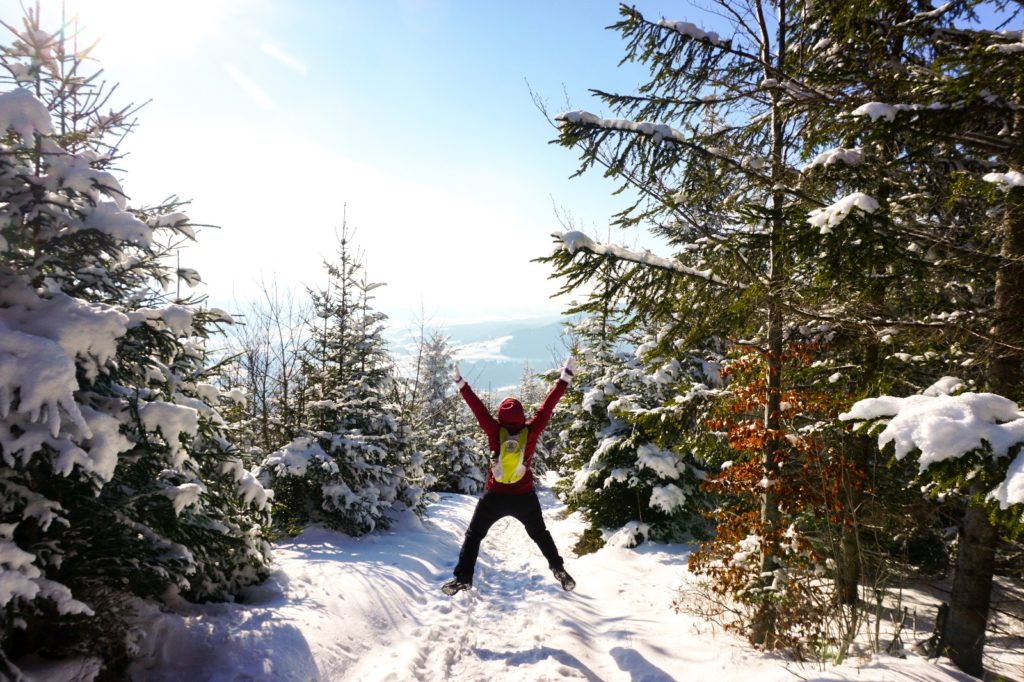
- Know how to find routes and get around
There are some great apps such as Bergfex that will give you ideas, but try to find out about local conditions, read some blogs about what’s possible in winter, check the weather and avalanche risk, have a look at webcams online (they’re everywhere!), and ask people.
All routes are marked with red-and-white painted blazes and yellow signs that colour-code paths blue-red-black just like ski runs. Regardless of what the signs show, follow the tracks. In winter, summer paths don’t exist or are impassible. The tracks from ski-tourers will show the way to avoid these dangers or a quicker way up a slope made possible by the snow. Forget about the times shown on the signs: they are summer hiking times.
Check what huts are open and book in if you need to when planning on staying overnight. Some of the huts are closed in winter but have winter rooms attached. These are basic shelters that will usually have some sort of stove (firewood may or may not be there) and a bunkbed-type sleeping room. Read what you can or call to find out what the winter-room is because they can vary wildly in conditions and you may have to pick up a key from somewhere/someone.
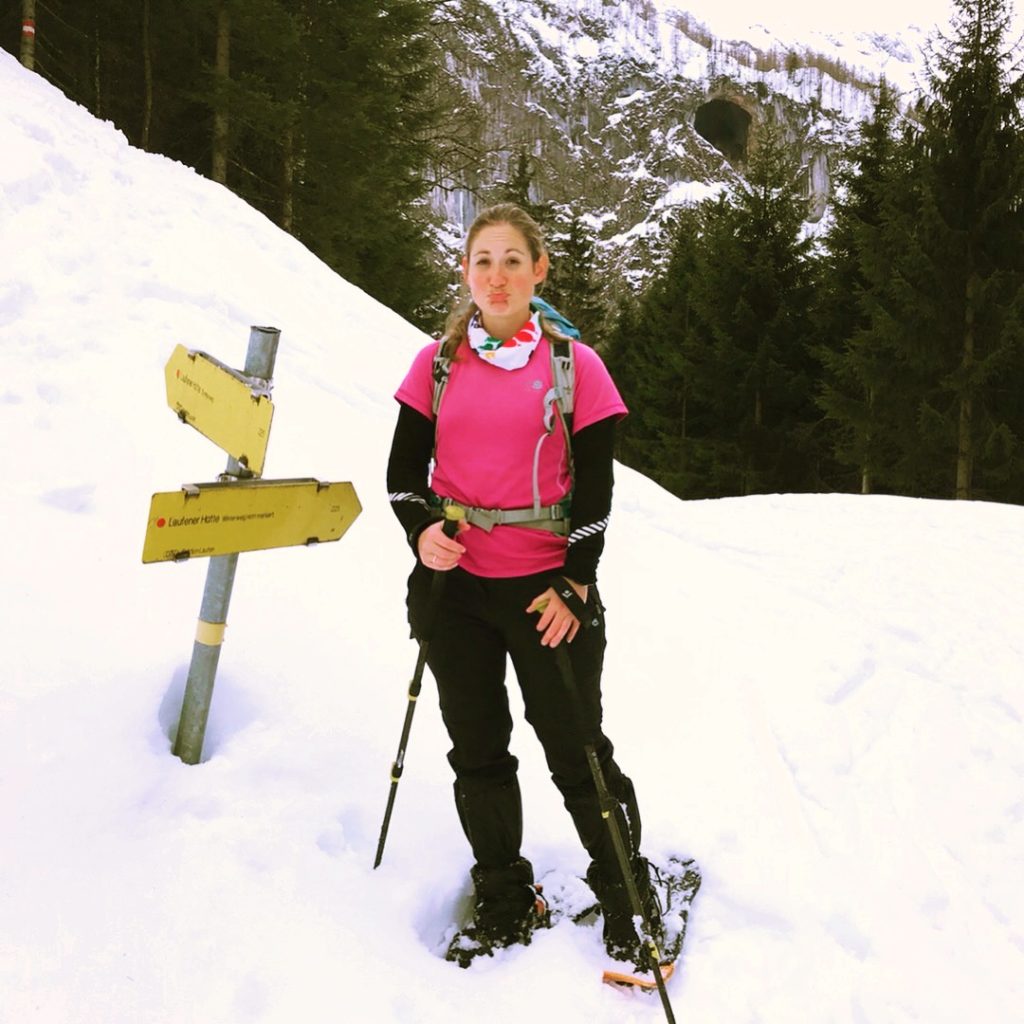
Sad face for trying to follow a summer path in winter 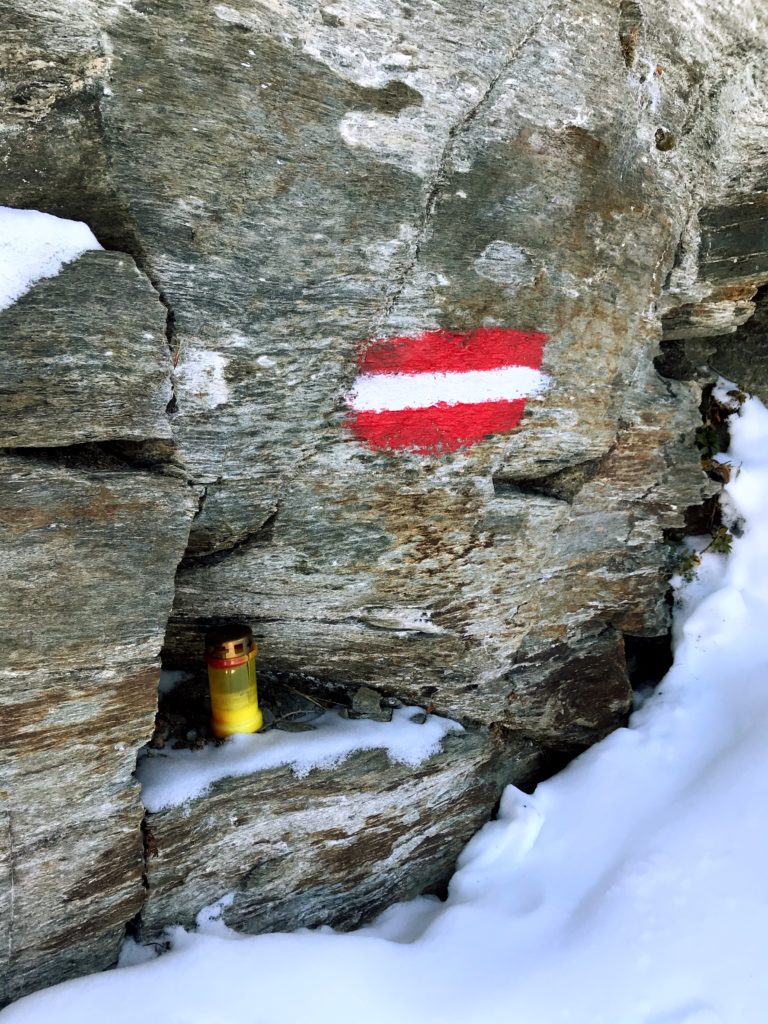
Helpful little trail marking 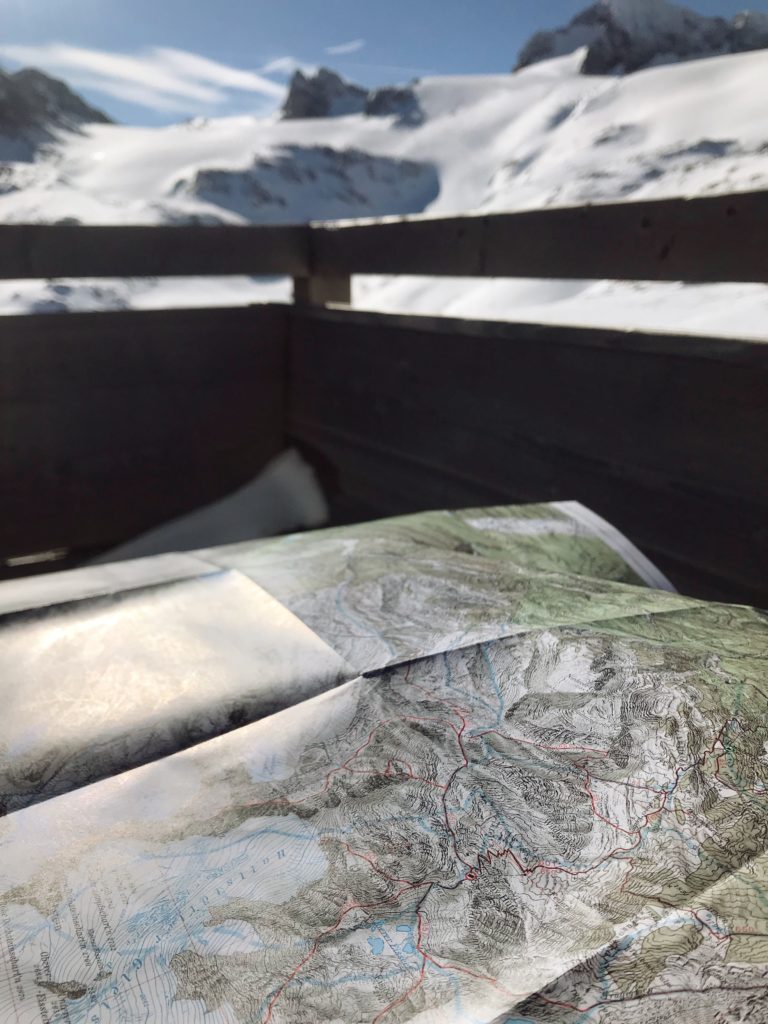
Actually Austrians don’t use paper maps so much… 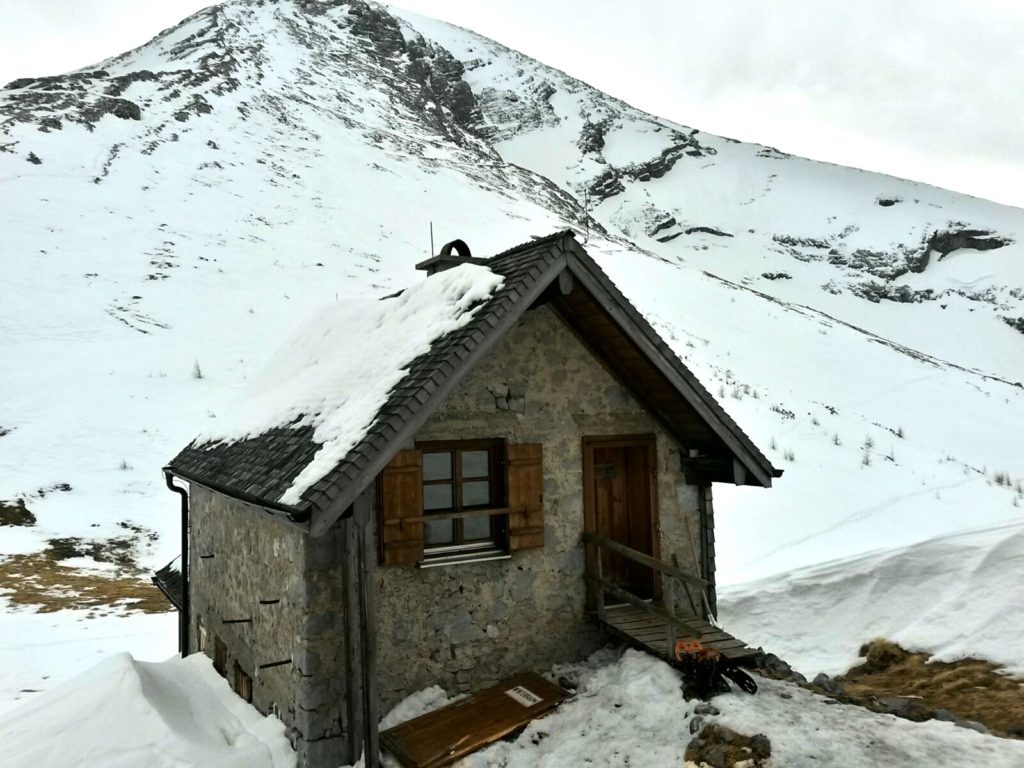
Cosy looking Winter Room
2. Change plans when necessary
You may really want to get to a summit or do a certain route but if you get there and it’s just not a good idea because of conditions or weather… then don’t do it. Don’t be too afraid, frustrated, stubborn or pig-headed that you do something stupid. This is winter, things are a bit unpredictable, and you will have to change plans rather often. I now set off thinking I will see how far I can get and then am pleasantly surprised if it all goes the way I planned!
Speaking of weather, you can change your plans if the weather isn’t looking great. I come from a country where the weather forecast is never that reliable (or maybe we just have constant rain so don’t pay attention to it so much…) so the concept of changing plans because of weather was a bit of an unusual idea for me. It took me a while to accept that rain was not simply unpleasant but dangerous in terms of avalanche risk.
3. Find a level that suits you
It may be having a winter-loving alpinist as a husband, but my impression was that everything in winter was super-extreme. All those epic videos on Youtube didn’t help: people dropping into endless narrow couloirs and back-flipping over entire forests.
However, it turns out there are many different activities at various levels of extreme. You can hike around a lake with spikes on your boots, you can snow-shoe up a valley or a steep summit, you can ski-tour up through the wood but ski down on the piste… there is a way to set that scale to what suits you.
For me, a lover of cardio and a good strenuous plod, I took up the much-maligned snow-shoes and love them to bits. It’s hard work and you can get up some great things. I can move as quickly as my ski touring friends uphill, enjoy the summit with them, and get to work hard going down as well! Happy days for me, maybe not for my quads…
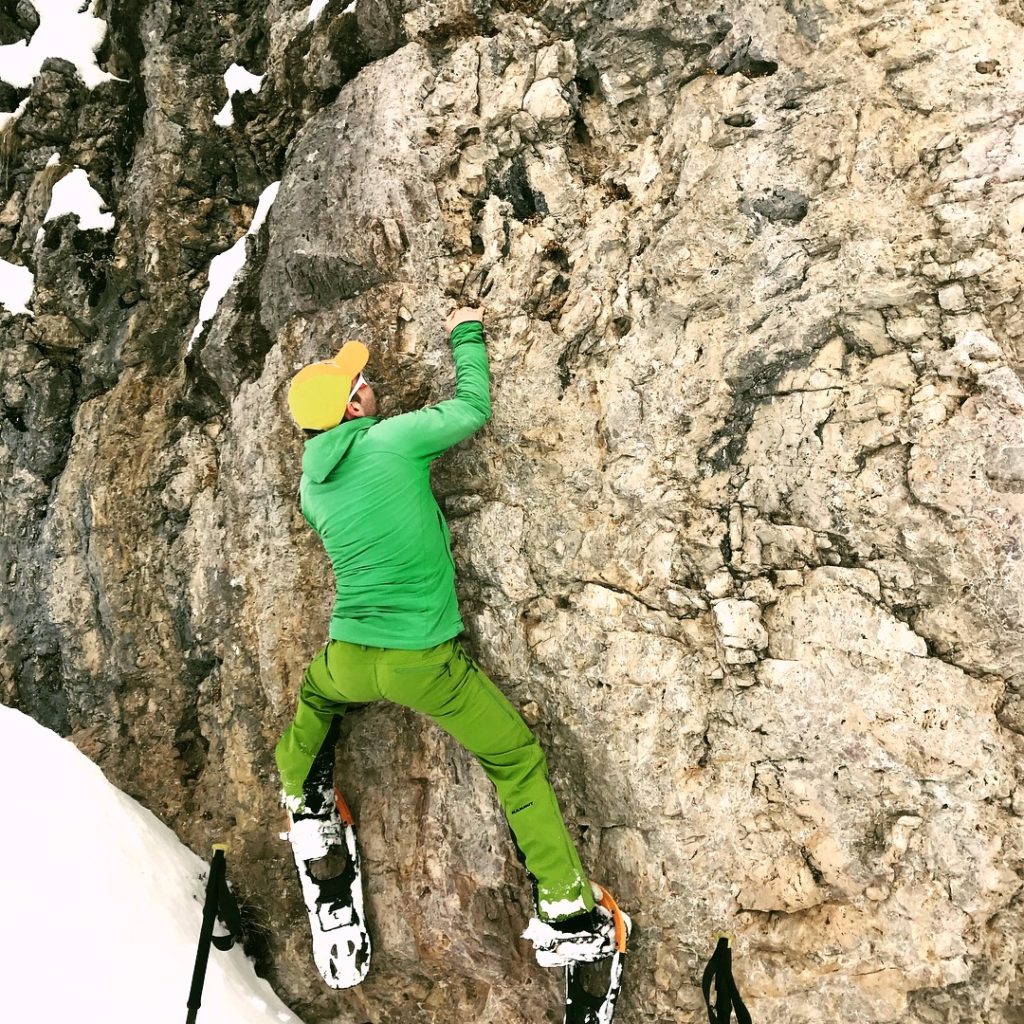
Extreme snowshoe climbing 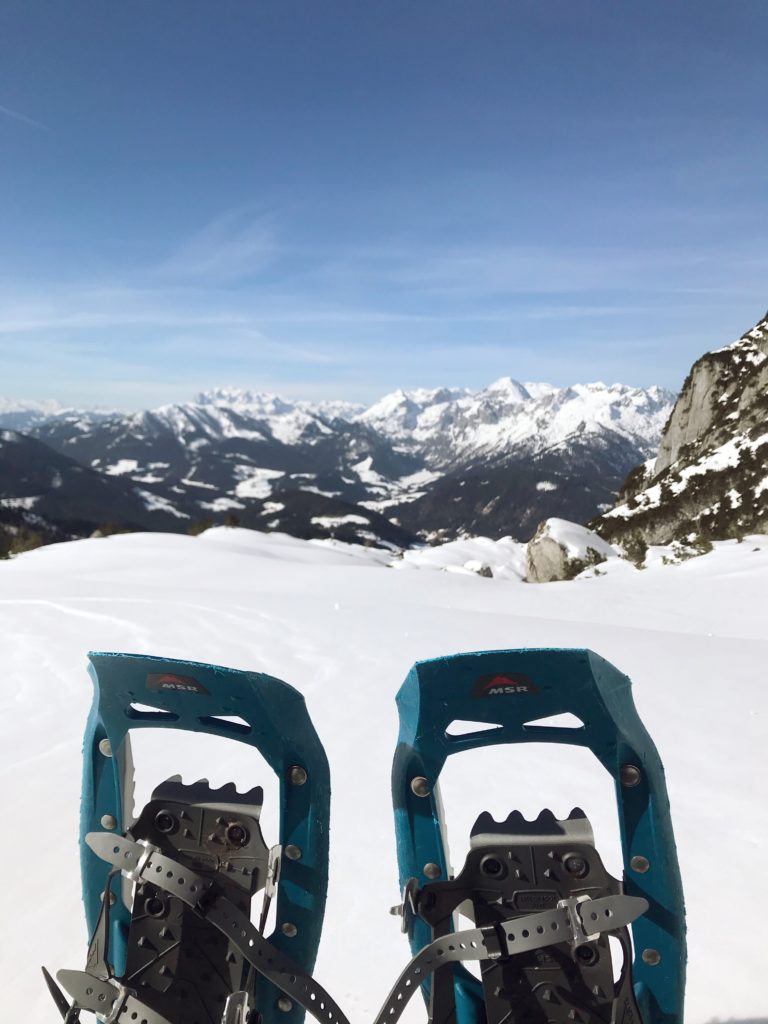
Easy to scale the heights in these!
4. Get the right kit
I am not a kit-head and really don’t care enough to do my own research most of the time. I’d keep wearing one shirt for 10 years if I could. But the right kit does really make a difference in winter. So ask a friend/family member to buy you something if you don’t want to spend hours comparing jackets!
The three things that made things oh-so-more pleasant for me are my winter boots (soles with grip I trust on anything and solidly stiff for kicking steps), hiking poles (my knees are going to thank me for this in 30 years or so), and good base layer leggings and top (cosy warm!).
5. Learn how to dress again
Speaking of cosy, pyjama-like undergarments, be prepared to learn how to dress yourself again for a day in the mountains.
I have learned a lot about the benefits of layers. Invest in a good base layer and change it at the top of the mountain so you don’t get cold. Bring multiple pairs of gloves. I usually have 3 different pairs with me (liners, medium weight, big mittens). Hats, head bands, buffs of varying thickness, and neck warmers are all great because they are easy to add and take off.
Don’t be afraid to stop to take on and off layers. This is a far better option than getting too cold before you realise it or sweating through something so you become too cold from your own sweat.
And when you are finished and getting ready to return home, don’t forget to change those socks! You could change all your clothes but if your feet are still wet, you’re going to remain cold and miserable.
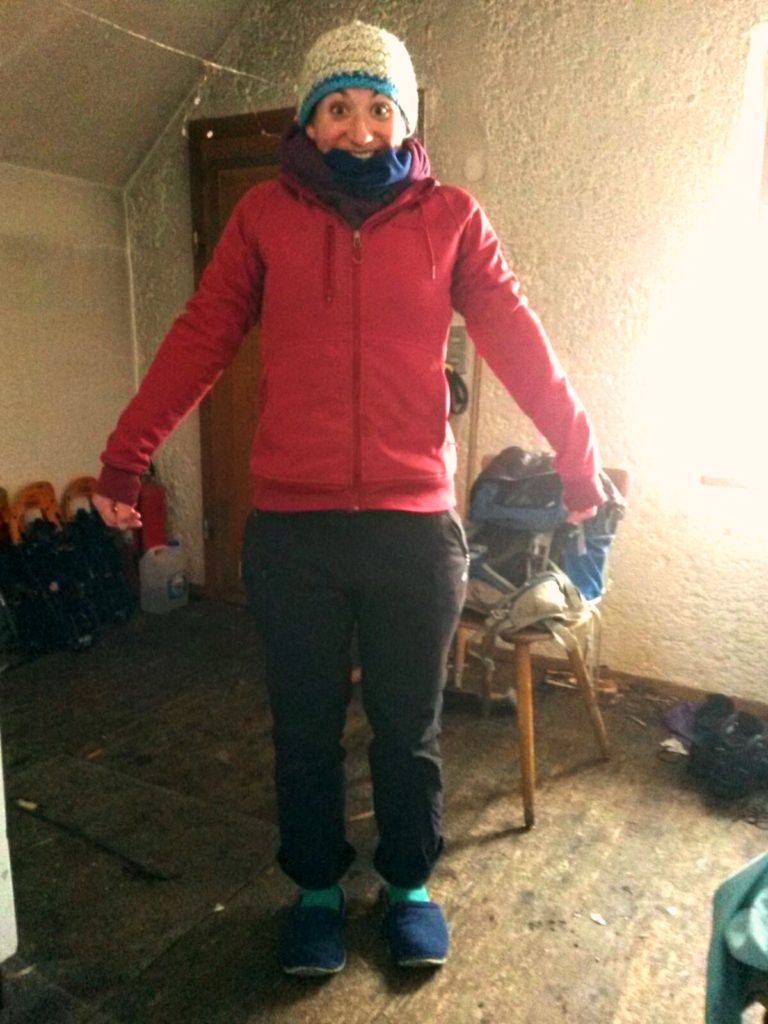
So many layers! 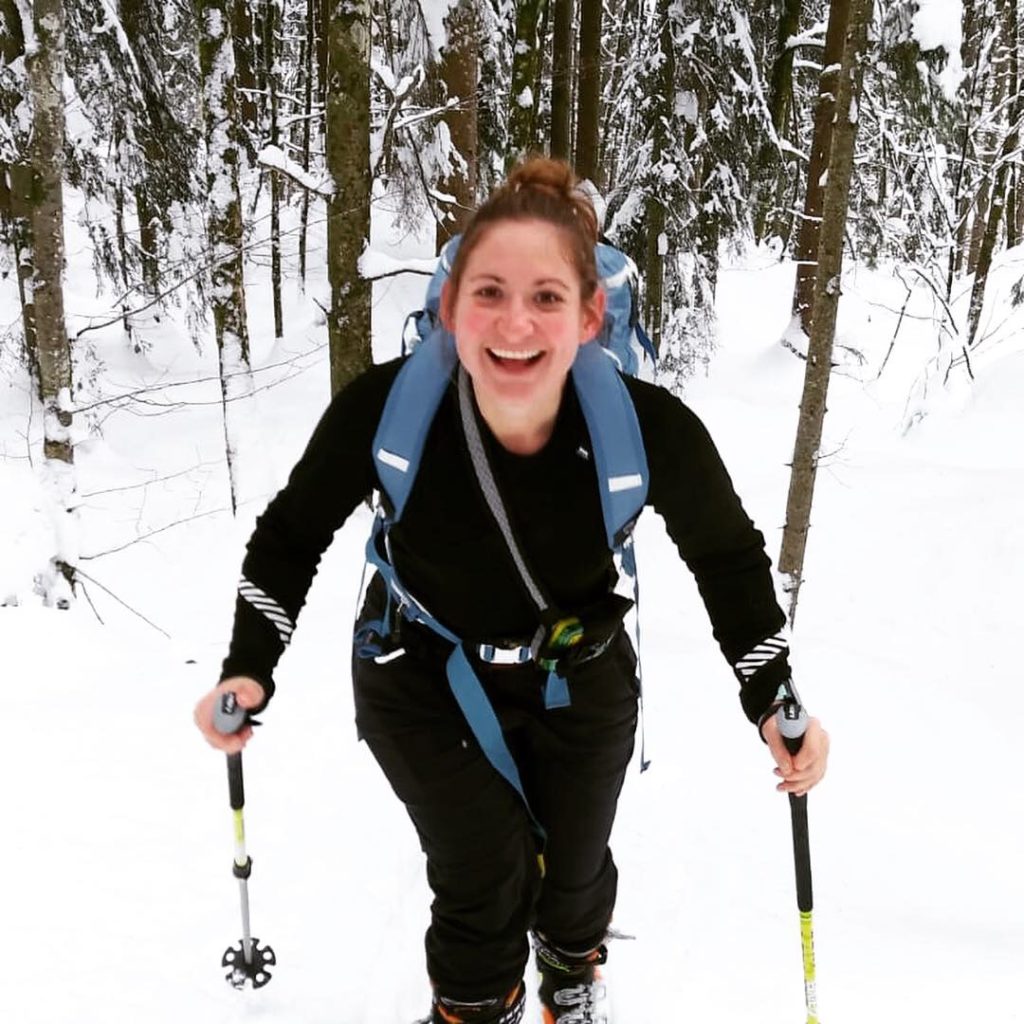
The face of a person with dry feet
6. Take those breaks
In fact, don’t be afraid to stop and take breaks for any reason, not just to change layers: water, snacks, admire the view, take photos. I came from a place where you could attack any route in a few hours. Here, it’s a different game: you’ll be walking up that slope for many, many hours. You’re never going to do it in one big push. So stop and adjust, be comfortable and you will enjoy it more: being miserable is not a sign of how hardy you are, it’s a sign you should change something. Bring a hot drink in a flask and enjoy a coffee break with a view!

I hope some of this helps you get out and about this winter!